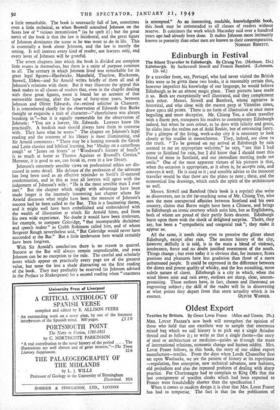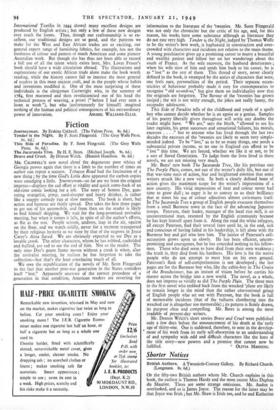Oldest Export
Textiles by Britain. By Grace Lovat Fraser. (Allen and Unwin. 25s.) MRS. LOVAT FRASER'S new book will strengthen the opinion of those who hold that one excellent way to sample that enormous mixed bag which we call history is to pick out a single Ariadne thread and to follow it ; to write so that a single theme—the story of steel or architecture or medicine—guides us through the maze of international relations, economic change and human oddity. Mrs. Lovat Fraser follows, in this book, the story of our oldest export manufacture—textiles. From the days when Lords Chancellor first sat upon Woolsacks, we see the pattern of history at its repetitions —regulation, free enterprise, new technical advances, new fashions, old prejudices and also the repeated problem of dealing with sharp practice. For Charlemagne had to complain to King Offa that the last consignment of woollen cloaks which had been exported to France were fraudulently shorter than the specification !
When it comes to modern design it is clear that Mrs. Lovat Fraser has had to temporise. The fact is that (as the publication of
International Textiles in 1944 shows) many excellent designs are produced by English artists ; but only a few of these new designs ever reach the looms. Thus, though our craftsmanship is so ex- cellent, our traditional designs are so good, and the patterns we make for the West and East African trades are so exciting, our general export range of furnishing fabrics, for example, has not the freshness of colour and pattern of much American and some pioneer Australian work. But though she has thus not been able to record a full use of all the talent which exists here, Mrs. Lovat Fraser's book should have a wide circulation abroad. The illustrations and explanations of our exotic African trade alone make the book worth 'reading, while the history cannot fail to interest the most general of readers in this most ancient craft, and in the people whose habits and inventions modified it. One of the most surprising of these individuals is the clergyman Cartwright who, in the summer of 1784, first mastered and then revolutionised out of his head the technical process of weaving, a priori (" before I had ever seen a loom at work "), but who (unfortunately for himself) Imagined nothing of the human and political consequences of his extraordinary







































 Previous page
Previous page